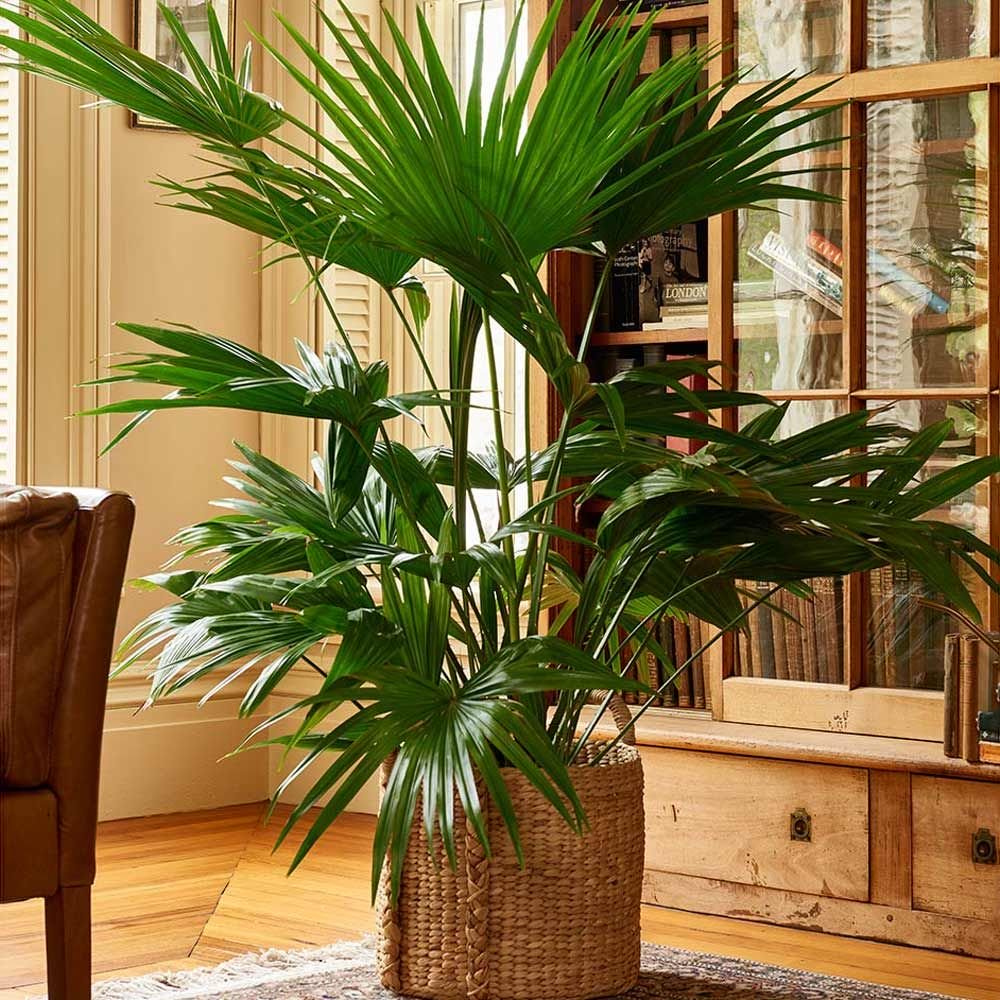Table Of Content

To prevent this, brace your palm in place for at least a year, or until it has reestablished sufficient roots to stay anchored. There are nearly 2400 species of palms, with perhaps the most familiar being the date palm. To successfully grow a palm tree, learn what the variety you choose needs in order to thrive in your climate, whether outdoors or inside.
Types of Palm Trees That Can Grow Indoors
They can thrive for decades as houseplants when you understand their needs. The short, plump, fuzzy sago palm trunk looks like a pineapple growing out of the ground. From the thick stem, long, stiff fronds arch out that have leaflets that grow upward. Debra LaGattuta is a Master Gardener with 30+ years of experience in perennial and flowering plants, container gardening, and raised bed vegetable gardening. She is a lead gardener in a Plant-A-Row, which is a program that offers thousands of pounds of organically-grown vegetables to local food banks.
Types of Indoor Palm Plants
8 Humidity-Absorbing Houseplants That Reduce Moisture Naturally - Country Living UK
8 Humidity-Absorbing Houseplants That Reduce Moisture Naturally.
Posted: Fri, 08 Mar 2024 08:00:00 GMT [source]
You will also find out about some less well-known indoor palm house plants. At the end of the article, you will find a helpful guide on how to care for your exotic, tropical potted plant. If you have a cold-sensitive palm, plant it in a warm microclimate, such as behind a windbreak or in a sheltered courtyard.
Common Indoor Palm Plant Problems: Brown Tips
Native to tropical and subtropical climates, there are many types of palm trees you can grow indoors to add a bold, tropical look to your home's interior. Many types of indoor palm trees make excellent additions to modern living spaces. Few houseplants are quite as dramatic as towering Kentia Palm, Chinese Fan, or Ponytail Palm.
Basics of Floral Design – Types of Vases, Vessels, Containers, and Holders
A good rule of thumb, if you want healthy palms, is to make sure you feed them frequently—whether you're growing them indoors or outdoors. Plus they’re fun to collect, and there are lots of benefits of growing them indoors. This detailed guide is designed to teach you all you need to know about how to care for palm plants indoors. There are more than 2,600 species available, including those that thrive both indoors and outdoors.
How to Amend Your Soil: Building Better Garden Soil 101
You can also boost humidity levels for a palm by placing the plant pot in a pebble tray filled with water. Areca palm—Also called the butterfly palm, this tropical house palm has feathery fronds and bamboo-like stems. These plants thrive in sandy soil and tolerate full sun or bright indirect light. In the summer, water them every two weeks, and once a month in the winter. New leaves appear vivid red at the top, similar to the Red Feather Palm. Because direct sunlight might harm the leaves, plant them in a shaded part of your yard or indoors with indirect lighting.
What to Look for in Indoor Palm Plant Identification
So, only repot every two or three years and keep the container relatively small. Elegant and easy to care for, this less-popular palm (Pinanga coronata) is named for its slender, cream-colored, clustered trunk that resembles a bamboo cane. It prefers bright, indirect light and moist, well-draining soil, and grows to 12 feet tall.
Bamboo Palm (Chamaedorea seifrizii)

Per Epic Gardening, they are cultivars, created by Chinese cultivators. They also insist that they are the perfect house plants since they remove hazards such as xylene, carbon dioxide, formaldehyde, and ammonia from indoor air. Proper watering is essential to keep all varieties of palms thriving indoors. The best tip to care for a thriving indoor palm is to water when the top 1” or 2” (2.5 – 5 cm) of soil had dried out. Pour enough water in the pot until it drains out the bottom and wait until all the excess water has gone.
After reviewing some of our favorite palms for your indoor space, hopefully you aren’t more confused than when you started! Even the most seasoned gardeners will struggle with this plant. It necessitates the ideal balance of fertilizer, light, and water. An unhealthy plant produces bleached leaves, so it requires more indirect sunlight. They require adequate drainage and a soil pH level of 5.0, so finding the ideal balance may take some time.
Try to refrain from repotting them unless absolutely necessary, they prefer to be left alone and like their home once they’ve settled. A combination of leaf mold, shredded bark, and peat moss has been known to help with Palm health. You can find soil specifically made for growing palm plants, so any of these would do just fine. Similar to other palms, it is tolerant of lower temperatures and does not need a great amount of light for growth. These are patient growers but after a few years of growth, they can reach a height of about 3ft or more.
If you have pets think twice about growing a sago palm because it’s highly toxic and can cause death if ingested. The areca is a cane-type palm with several common names including butterfly palm. This species displays similar fronds as the kentia and grows up to 8ft tall, which makes it a great focal point of large rooms or within office reception areas. This species is the most popular grown indoors from its genus (dypsis) and is sold at many garden stores.
45 Best Indoor Plants on Amazon 2023: Fiddle Leaf and More The Strategist - New York Magazine
45 Best Indoor Plants on Amazon 2023: Fiddle Leaf and More The Strategist.
Posted: Tue, 22 Aug 2023 07:00:00 GMT [source]
Unlike other houseplant palms, the ends of the leaves are not tapered but have saw-toothed ends. The ponytail palm plant grows well in indoor environments and it is also one of the best palm trees to grow in pots outdoors in temperate climates. The Chinese fan palm has dark green fronds that are shaped like a star. It is a fast-growing palm variety and grows up to 10 ft. in indoor spaces. Parlor palm houseplants prefer low light and may actually suffer in direct sunlight, so there’s no need to place them in your brightest windows. They do like a little bit of light, and will do best by a window that receives some early morning or late afternoon light.
Madison is a writer and editor with a Bachelor’s degree in History and Political Science. She writes and photographs for various online and print publications in the gardening sphere and is the author of the book The Next-Generation Gardener. Other known common names of this plant include King Sago, Japanese Funeral Palm, and Palm Cycad.

Roaches, aphids, mealybugs and other insects can harm palm trees, leaving holes in trunks and discolored and drooping fronds behind. Once you've found a palm that fits your location, it's time to plant it. This is a crucial stage in your palm's life, and knowing the correct preparations is key. Avoid planting palm trees during dry seasons—young palms are more susceptible to damage from weather changes. The best time to plant palms is during spring when the soil temperatures warm up. This way the palms get 5 to 6 months to grow before cooler weather returns.
The upward arching, dark green fronds of majestic palm, can uplift an empty corner of your room with its larger than life appearance. This shade-resistant plant is a slow grower; hence, it is a perfect choice as a houseplant. Potted bamboo palm can enhance the beauty of any interior decor. It can reach up 5-7 feet tall with 3-5 feet spread, growing in clumps with multiple reed-like stems. Besides that, according to NASA, the bamboo palm also cleanses and purifies indoor air, making it perfect for bedrooms.
Use a hand pruner for smaller palms and a sharp pruning saw for larger leaf stems. As the name suggests, the foliage of the bamboo palm resembles that of growing bamboo. And have leaves that grow in clumps, creating a beautiful green plant. The bamboo palm only grows up to 2-3 ft., which makes it an ideal plant for small indoor spaces. With its arching fronds and vibrant green color, it is sure to bring a royal feel to any indoor space it is placed in. This variety of palm can take over your room because it can grow up to 98 ft. in height.

No comments:
Post a Comment